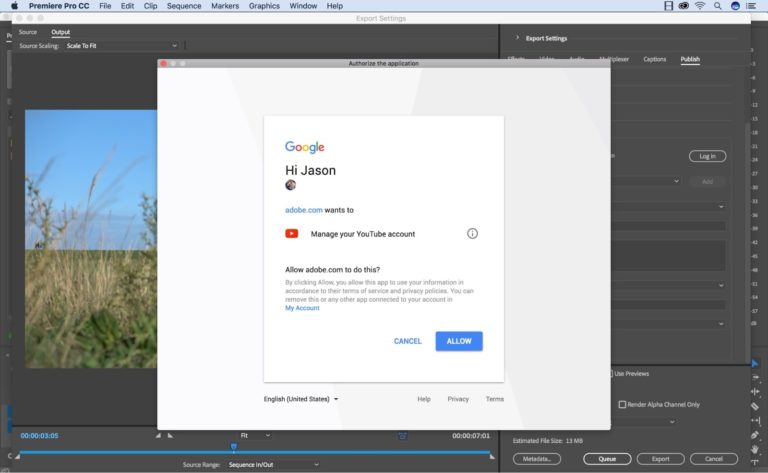

- ADOBE MEDIA ENCODER EXPORT SETTINGS MP4
- ADOBE MEDIA ENCODER EXPORT SETTINGS PC
- ADOBE MEDIA ENCODER EXPORT SETTINGS MAC
There is Media Browser, Preset Browser, Queue, and Encoding. The app is part of the Creative Cloud subscription and is a companion to After Effects, Premiere, Audition, Character Animator and Prelude. Media Encoder is a media processing app that allows you to encode your video and audio in different formats. Now that you have that video (or your project in the queue) we need to compress it so it can be submitted through Canvas. This step is identical to the Media Encoder steps found in the Intermediate Method except that you will not be using a high quality source video because your project will be compressed from the start. Your project file will show in the Queue Panel of Media Encoder. You can also use the shortcut CTRL+ALT+M.
ADOBE MEDIA ENCODER EXPORT SETTINGS MP4
To export to an MP4 from After Effects will you will want to go to File > Export > Add to Adobe Media Encoder Queue or Composition > Add to Adobe Media Encoder Queue. The one benefit about letting Adobe Media Encoder do the rendering work is that it won't prevent you from working in After Effects while it is rendering. Small light weight projects with few effects may also be okay to render this way. I would only suggest this method if you need to output a rough version of your project. You'll have to render the video again and hope for a better outcome. Imagine, you worked hard on a project and rendered it out and after 4 hours of rendering you find that the quality is not very good. In some cases, certain effects may be rendered incorrectly making this method not ideal to set up your final deliverable.

This method is frowned upon in the After Effects community because Media Encoder will only do one pass when compressing which could result in glitches and poor quality. This method will instruct you to export directly from After Effects to an MP4 using Media Encoder. Great! The last step will be to insert it into Media Encoder for compression. Since you most likely started with a 1280x720 composition, then the video should be nice and large. When you're ready you can click on the button labeled 'Render' found to the far right of the screen.Īt this point you should now have a nice high quality uncompressed video of your animation. Click on the name shown (which is normally the name of your comp) and search for a folder where you want to video to be saved. To the right of the Output Module setting will be a setting labeled 'Output to:' and this is where you tell After Effects where to place your video. Keep in mind that a lossless file is uncompressed so the file can be quite large. Some After Effects users will set their format to be images that can later be imported into Premiere as an Image Sequence but for this course we will be using AVI. It is possible that your computer has a different lossless format set up by default.
ADOBE MEDIA ENCODER EXPORT SETTINGS MAC
Mac users should set the format to QuickTime to create a.
ADOBE MEDIA ENCODER EXPORT SETTINGS PC
Click OK to close the window.Ĭlick on "Lossless" in the Output Module setting to open a new window.įor PC users, set the format to AVI to create a.

Just make sure it is set to Best Settings. Go ahead and peek at it but you shouldn't have to adjust anything. If you click on 'Best Settings' it will open a menu. Render Settings should default to Best Settings. Located at the bottom of the screen you will see the Render panel with a couple options that are labeled Render Settings and Output Module (in red box above). You can also use the shortcut key CTRL + M. To export your project you will go to File > Export > Add to Render Queue or Composition > Add to Render Queue. If the rendering takes hours then you'll have to wait. The only downfall to this method is that once you start the rendering process, you are unable to use After Effects. This method can seem like a lengthy process but it is popular with many After Effects users and is a good habit to get into. This method can be good for large projects because when you export a lossless video of your project it will act as a source video that you can later use to create a compressed version for the web (or submitting your assignments). This method will instruct you export a high quality lossless video from After Effects and then compress it using Media Encoder.


 0 kommentar(er)
0 kommentar(er)
